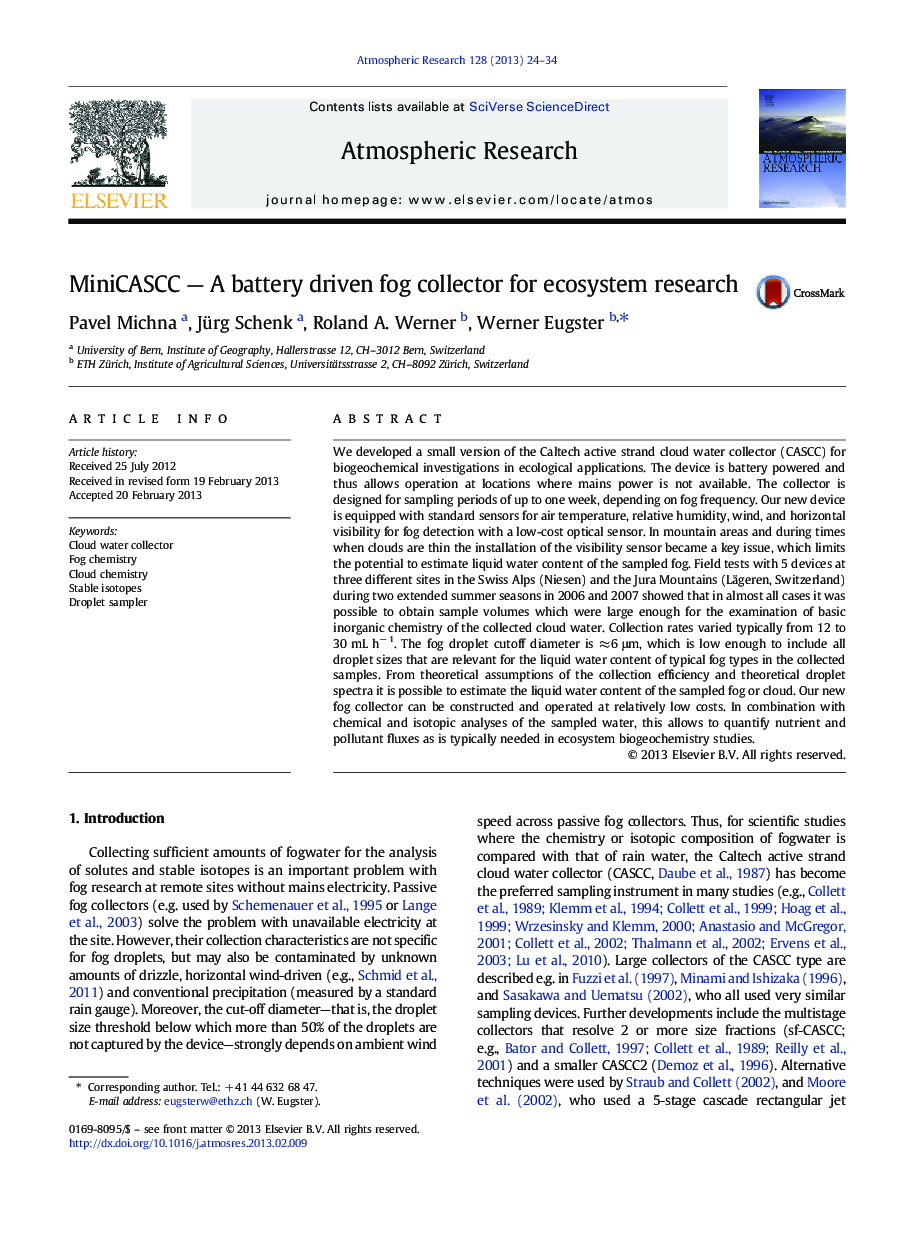| Article ID | Journal | Published Year | Pages | File Type |
|---|---|---|---|---|
| 4450021 | Atmospheric Research | 2013 | 11 Pages |
•A small version of the Caltech active strand cloud water collector was developed.•The collector is useful to determine nutrient and pollutant fluxes to ecosystems.•Collection rates varied typically between 12 and 30 mL h− 1 during fog events.•The design allows one to collect samples at remote sites and in mountain areas.•The collector is battery driven and allows sampling of weekly bulk samples.
We developed a small version of the Caltech active strand cloud water collector (CASCC) for biogeochemical investigations in ecological applications. The device is battery powered and thus allows operation at locations where mains power is not available. The collector is designed for sampling periods of up to one week, depending on fog frequency. Our new device is equipped with standard sensors for air temperature, relative humidity, wind, and horizontal visibility for fog detection with a low-cost optical sensor. In mountain areas and during times when clouds are thin the installation of the visibility sensor became a key issue, which limits the potential to estimate liquid water content of the sampled fog. Field tests with 5 devices at three different sites in the Swiss Alps (Niesen) and the Jura Mountains (Lägeren, Switzerland) during two extended summer seasons in 2006 and 2007 showed that in almost all cases it was possible to obtain sample volumes which were large enough for the examination of basic inorganic chemistry of the collected cloud water. Collection rates varied typically from 12 to 30 mL h− 1. The fog droplet cutoff diameter is ≈ 6 μm, which is low enough to include all droplet sizes that are relevant for the liquid water content of typical fog types in the collected samples. From theoretical assumptions of the collection efficiency and theoretical droplet spectra it is possible to estimate the liquid water content of the sampled fog or cloud. Our new fog collector can be constructed and operated at relatively low costs. In combination with chemical and isotopic analyses of the sampled water, this allows to quantify nutrient and pollutant fluxes as is typically needed in ecosystem biogeochemistry studies.
